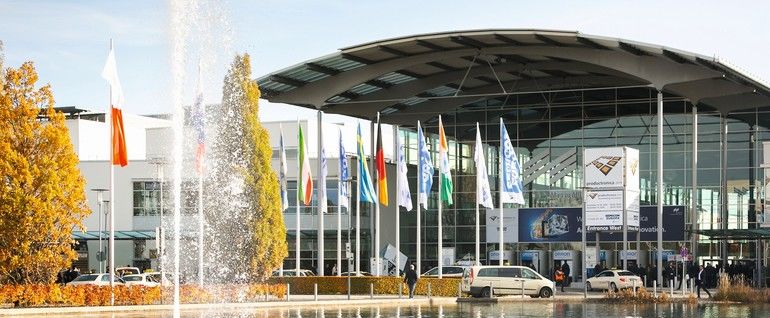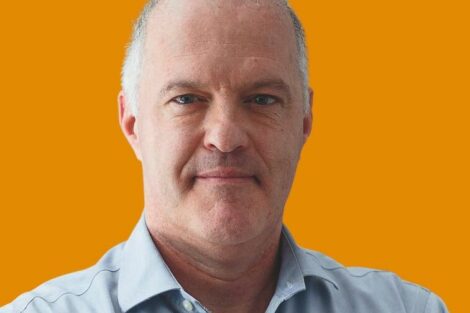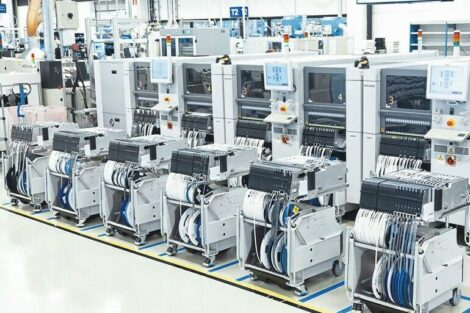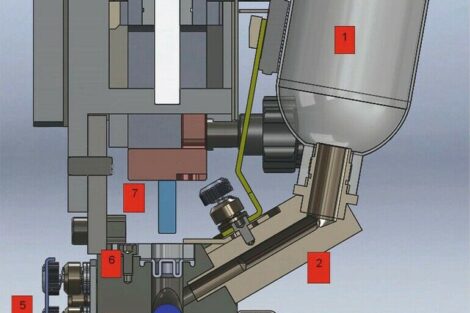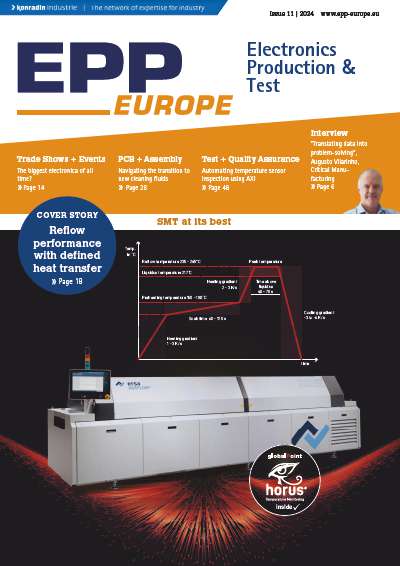Thanks to an announcement by the Bavarian Ministry of Economic Affairs in June permitting trade fairs to resume from September, productronica 2021 is officially back in the industry calendar. With 2019’s event, which hosted more than 1500 exhibitors, drawing over 44,000 visitors from across the globe, the expo provides an important networking opportunity as well as a platform for those working in the global electronics manufacturing industry to showcase new developments. As Rainer Kurtz, CEO of the Kurtz Ersa Group and Chairman of the Advisory Board of productronica, explained, this is of even higher importance as the sector recovers from the effects of the pandemic.
“In the first half of 2021, incoming orders in the industry developed, for the most part, very well,” Kurtz said. “As the pandemic slows down, exhibitors expect the positive business trend for this year and the next to continue. In this respect, productronica 2021 has every chance of being a wonderful reunion for the entire global electronics production industry.”
Nearly five months before the start of the event, more than 500 exhibitors had registered, including key industry players ASM Assembly Systems, F&K Delvotec, Komax, as well as Kurtz Ersa and Rohde & Schwarz. Organisers say companies can continue to register until November.
COVID-19 measures
In light of ever-changing travel restrictions, this year’s event will also feature a digital supplement, meaning industry representatives will have the opportunity to take part in the trade fair in person or virtually.
Messe München also says it has developed a comprehensive safety and hygiene concept in close cooperation with the relevant authorities for November’s event. In addition to basic safety measures such as maintaining appropriate distancing, wearing FFP-2 masks and attendee traceability, the venue has implemented what it calls the VCR concept. This ensures access to the exhibition grounds is only granted to those who have been vaccinated, have tested negative or are certified as having recovered from COVID-19. Exhibitors and visitors can enter this information during registration. The venue will also be making testing facilities available on site, and adds that modern ventilation systems guarantee a regular and reliable supply of fresh air in the exhibition halls, providing additional protection for exhibitors and visitors.
“Over the past few months we have been working hard on the safety standards and are now excellently prepared for the new start with an optimal safety and hygiene concept. We are looking forward to once again welcoming lots of exhibitors and visitors to productronica in person,” Falk Senger, CEO of Messe München, said.
IoT, 5G and 6G?
In terms of event content this year, organisers say there will be particular emphasis on IoT (Internet of Things) which, thanks to the new 5G mobile communications standard, is finally able to tap into its full potential. According to a study by Computerwoche and CIO, 44 percent of industrial businesses surveyed said they had increased their IoT budget during the pandemic. Indeed, IoT remains one of the fastest growing technological sectors. Even the most conservative estimates suggest there will be nearly 31 billion IoT devices online by 2025. A report by Market Research Future predicts that the global market for IoT in manufacturing alone will grow to USD 751.3 billion by 2023, with a compound annual growth rate (CAGR) of 24 percent. IoT is closely tied to 5G, as the new communications standard means the range of IoT applications can be expanded beyond industry and into the areas of energy, health, science and consumer electronics.
Yet, despite the advances brought about by 5G, many are already preparing for the next mobile communications revolution: 6G. Whereas 5G can only support up to one million networked IoT devices in an area of one square kilometre, 6G can increase this tenfold.
The IoT is also starting to establish itself as a driving force for the semiconductor industry. The rapid growth of networked IoT devices requires not only more semiconductors, but also increasingly high-quality components for them. According to analysts, the IoT semiconductor market is still in its infancy. Predictions suggest that the share of IoT-specific semiconductors will increase from 7 to 12 percent between 2019 and 2025. As the shift takes place, chip manufacturers will also need to meet the typical requirements of IoT, such as ultra-low power, small form factors and integrated security.
Companies exhibiting at productronica on the topics of IoT, 5G and 6G include iTAC (Hall A3, Booth 161), Cimetrix (Hall A3, Booth 437), Segger Microcontroller (Hall A1, Booth 174), Orbotech (Hall B3, Booth 320), Rohde & Schwarz (Hall A1, Booth 375), Fraunhofer IZM (Hall B1, Booth 228), and Aurel (Hall A2, Booth 481).
Electromobility
Another fast-growing area which will be highlighted at this year’s expo is electromobility, a sector in which the electronics manufacturing industry is a key player. In productronica’s host nation Germany, electromobility is picking up speed like never before. In 2020, the total number of electric vehicles on the road in Germany reached one million, increasing their share of the total automotive market to 12.6 percent (from 2.9 percent in 2019). The German market for electromobility now ranks second in the world behind China.
More electric cars need more charging points, and in order to keep pace with the registration approvals of electric vehicles, and the goal of increasing the number of electric vehicles on the road to 14 million by 2030, the German Association of the Automotive Industry (VDA) claims that the country needs more than a million freely accessible charging points. To help achieve this, the German government is making EUR 500 million available by the end of 2025 for the ‘publicly available charging infrastructure for electric vehicles’ support programme.
But charging infrastructure won’t help against today’s electric vehicles’ limited ranges. High-performance batteries with longer service lives are also crucial. According to the European Transport and Environment (T&E) association, there are plans in place for 38 battery factories across Europe with an investment volume of around EUR 40 billion. Although nearly all of these rely on established lithium-ion technology, solid-state batteries such as those being developed by Daimler, Volkswagen and Toyota provide hope for the future. They promise twice the range of current battery technologies at the same size. The first test vehicles using these batteries, including those by Toyota and Volkswagen, are already in development but it will be some time before this new type of battery is available on larger scale. One analyst (Yole) expects the technology to reach an overall performance of 2.36 GWh by 2027 – enough for just 50,000 electric cars with a 50 kWh battery.
Another way of increasing range is updating components. Fraunhofer IZM, together with Bosch and Porsche, are now developing converters with lower-loss semiconductors made of silicon carbide (SiC). These make it possible to achieve an up to 6% larger range. The first mass-produced vehicles are already using the SiC and GaN transition semiconductors, which are superior in terms of power density, longer service life and reliability.
Companies exhibiting in the field of electromobility include Manz (Hall B2, Booth 416), KOMAX (Hall B4, Booth 263), Festo (Hall A3, Booth 343), LPKF (Hall B2, Booth 303), Viscom (Hall A2, Booth 177) and Hesse Mechatronics (Hall B2, Booth 221).




